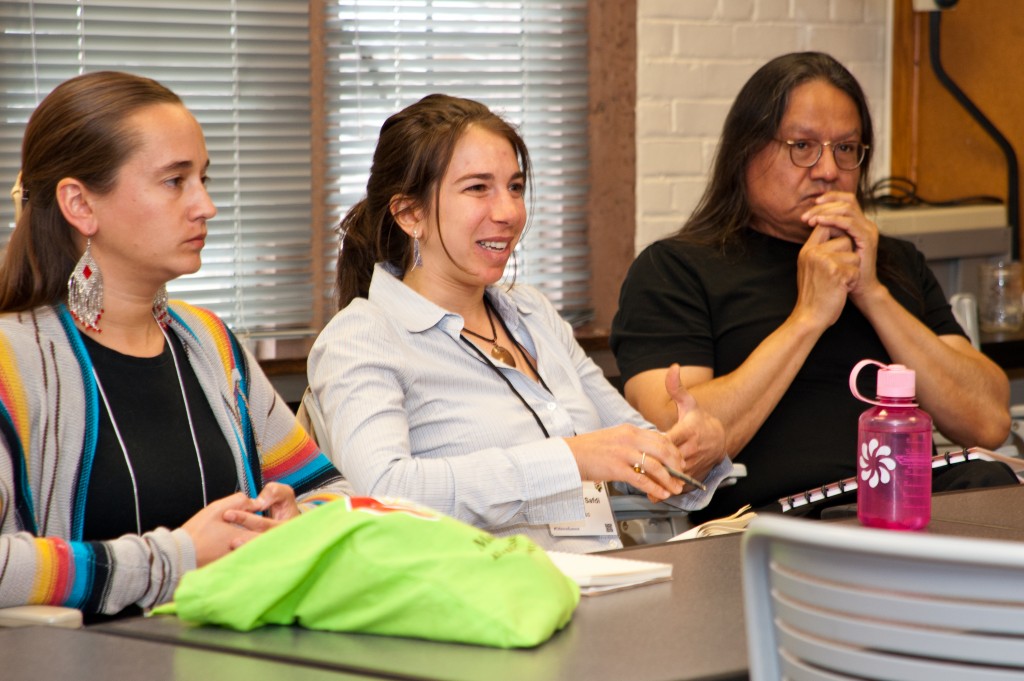
Agreeing that we should use the tools and knowledge we already possess helped set a positive note during the ‘Sustainable Water and Land Conservation Panel’ Saturday morning at the US/Canada Citizens Summit Conference. The idea of employing strategies that we already know work differs from many other issues of the day, which are looking toward new technology and future innovation. In the conservation community there are two important approaches we should utilize in order to move the solutions forward. First, tackling these problems must follow ecological principles instead of being guided by social and political boundaries. Directed by migratory bird flyways and river basins instead of jurisdictions will lead to strategies that work to protect resources rather than maintain arbitrary policy borders. Secondly, there are simple solutions as articulated by the session’s panelists. Each of the speakers brought up specific simple solutions to effectively move conservation forward. These ideas included shifting the way we graze livestock so that it is less degrading, by allowing more woody vegetation around waterways to reduce runoff. Panelist Steve Zack also mentioned the reintroduction of beavers as a method for maintaining flooding and natural water storage. Not all of the solutions that should be implemented are ecological, and much of the change that needs to take place is through local and regional policy shifts. As Gerald Torres, one of the panelists mentioned, this includes removing bans on the use of grey water, the recapture of condensation from air conditioners, as well as programs to incentivize water conservation and reforming city zoning regulations that limit sprawl.
The conversation tackled the definition of conservation and how it should be understood within a variety of contexts. This definition would hopefully expand the characterization of the term beyond the Yellowstone model, which strictly limits human use. In order to reach the goal of 50% land conservation, which Gary Tabor pointed out is the amount ecologists agree is necessary to protect natural resources, we need to think about land conservation as incorporating working lands, and uses that are compatible with maintaining and restoring the integrity of landscapes.
Our conversation also addressed the ability of all types of people to engage on this issue, from encouraging using fewer resources by individuals, to modifying oil extraction in the largest piece of protected land in the U.S., the National Petroleum Reserve in Alaska. While protecting wild and scenic places is important, it is unlikely the future of conservation in the US and Canada and local movements and citizen engagement should be the focus of our efforts moving forward. This brought up the question of how we engage with communities that have generally been left out of this dialogue. Bringing people together on the issues they care about is a way to draw them to the conservation through relating it to health, clean water, poverty alleviation, and their faith. This movement has the opportunity to offer something to all of these people because it is an integral part of sustainable development. The type of conservation that we talked about during this panel is that which provides the balance to unplanned and chaotic development. It is a sanctuary from over consumption of resources and a lack of deliberateness about how and what we use, whether through ensuring that these resources continue into the future or through providing a respite in a busy world.
-Outcomes
for land and water conservation at Rio+20 should include:
-Definition
of conservation that includes working landscapes and sustainable uses;
-Metrics
for measuring and defining various types of conserved natural systems,
including criteria for healthy ecosystems;
-These criteria should be set to achieve fully functioning
resilient systems, not baseline targets;
-Incentives
for agricultural production that minimizes agricultural runoff and sedimentation
of waterways.
Angela Whitney, MESc ’13, F&ES